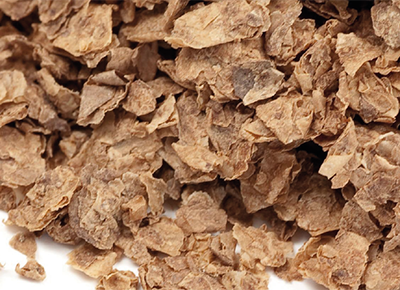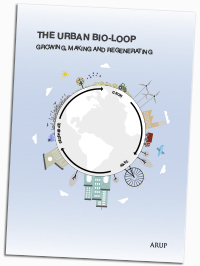Organic waste, such as bananas, potatoes and maize could be used as building materials, according to a new Arup report.
The consultant said it would help tackle the global problem of rising levels of waste and depleted resources. In the UK alone, construction accounts for 60% of all raw materials consumed.
Capturing organic waste streams from cities and the countryside could provide the industry with lower-cost, lower-CO2 building materials such as bricks, insulation and partition boards, according to the report, which envisages a completely circular system with building waste fed back into the biological cycle at the end of its service life and nutrients returned to the soil.
The potential for the bio-economy is “huge”, Arup believes.
“Over 40 million tonnes of dried organic waste from agriculture and forestry was produced in Europe in 2014 alone and the amount is growing year on year,” the firm said.
“A kilogram of waste incinerated for energy recovery has a value of approximately 0.85 euros but the same material used for interior cladding could sell for up to six euros per kilogram.”
The report, The Urban Bio-loop, also points to advances in the development of alternative organic materials, including mushroom bricks grown in five days and waste potatoes used as insulation and acoustic absorbers.
Arup has created the SolarLeaf, the first facade system in the world cultivating micro-algae to generate heat and biomass and BioBuild, the first self-supporting facade panel made from bio-composite materials.
“As one of the world’s largest users of resources we need to move away from our ‘take, use, dispose’ mentality,” said Guglielmo Carra, Arup’s Materials consulting lead for Europe.
“There are already pockets of activity, with some producers making lower-CO2 building products from organic materials. What we need now is for the industry to come together to scale up this activity so that it enters the mainstream. An important first step is to work with government to rethink construction codes and regulations to consider waste as a resource, opening up the opportunity to repurpose it on an industrial-scale.”
Organic matter construction products

- Peanuts: shells are being used to produce low-cost materials, such as partition boards that are resistant to moisture and flame retardant.
- Rice: rice husk ash can be mixed with cement to reduce the need for fillers. Rice can also be used as a raw material for the production of boards.
- Banana: banana fruit and leaves are being used to make rugged textiles. Bananas contain high strength fibre and have good acoustic absorption and durability.
- Potato: the peel from potatoes can be cleaned, pressed and dried to create a low-weight, fire resistant, water repellent, insulating material and acoustic absorber.
Image: Underworld/Dreamstime

A kilogram of waste incinerated for energy recovery has a value of approximately 0.85 euros but the same material used for interior cladding could sell for up to six euros per kilogram.– Arup















